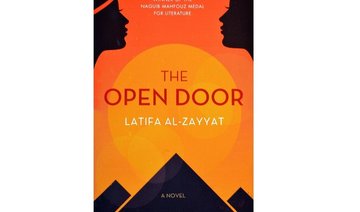A new field has emerged, carried by a surge of digital technologies. It is known as collective intelligence or crowdsourcing, which has a familiar ring but should not be confused with crowdfunding. Crowdsourcing refers to harnessing the power of a large number of people to implement a task or project to obtain information or to solve a difficult problem. The idea is that a group of people can offer greater insights and better answers than an individual can.
In its most restrictive meaning, collective intelligence is basically concerned with how groups of people cooperate online. In its broadest sense, it is concerned with how all kinds of intelligence happen on large scales.
This latest book by Geoff Mulgan is a perfect introduction to collective intelligence, a little-known discipline that “can change our world.” The book draws on subjects such as social psychology, computer sciences and economics, as well as the author’s experiences as co-founder of the think tank Demos.
The author, who has worked in government, charities, businesses and movements, believes there is a blatant need for more effective innovation to deal with challenges ranging from inequality to aging, climate change and conflict.
“I’ve been fascinated by the question of why some organizations seem so much smarter than others, better able to navigate the uncertain currents of the world around them. Even more fascinating are the examples of organizations full of clever people and expensive technology that nevertheless act in stupid and self-destructive ways,” writes Mulgan.
This leads us to ask how societies and governments are expected to solve complex problems, or in other words: How can a collective problem be resolved with a collective solution? “Collective intelligence has to be consciously orchestrated, supported by specialist institutions and roles, and helped by common standards. In many fields no one sees it as their role to make this happen as a result, the world acts far less intelligently than it could,” writes Mulgan.
This was the case with the Central Intelligence Agency (CIA) informing then-President George H. W. Bush that the Berlin Wall would not fall, while the news was showing just that. The financial crash of the late 2000s is another perfect example. Despite a plethora of data obtained through sophisticated information technologies, financial analysts, economists and journalists were unable to warn the world about the impending economic disaster.
Moreover, it is estimated that up to 50 percent of antibiotic prescriptions are unnecessary, 25 percent of medicines in circulation are counterfeit, and 10-20 percent of diagnoses are incorrect. Despite unprecedented access to medical data, we are still unable to use that information to make better decisions and improve our health.
Collective intelligence is not new. Thucydides’ description of how an army went about planning an assault on a besieged town is one of the first historical accounts of collective intelligence. First, ladders were made; their height was calculated by counting the layers of bricks on the side facing the town.
Nowadays, human eyes have been replaced by Dove satellites, the size of a shoe box, which orbit the globe. They have shown that the spread of night-lights in Myanmar reveals slower economic growth than the World Bank estimates.
In Kenya, they have provided the number of metal roofs, indicating that people are moving out of poverty. In China, Dove satellites have counted the number of trucks in factory parking lots, which denotes industrial output. Satellite pictures are replacing sophisticated statistics.
As machine intelligence has progressed enormously, there have been efforts to develop collective intelligence. The website Polymath encouraged people to help solve the hardest maths problems. It found that many minds could find solutions more successfully than mathematicians working alone.
The recent history of collective intelligence is a combination of humans and machines, organizations and networks. Google Maps is a perfect example. Google lacked the essential skills to reach its goal, so it brought in the knowhow it lacked.
One of the best examples of a human-machine hybrid is found in language teaching. It takes around 130 hours to master a foreign language. Recently, Duolingo combined machines and human intelligence by mobilizing 150,000 responders to test thousands of variants of its online language lessons. Thanks to this collective output, it decreased the time needed to speak a foreign language to 34 hours, and that brought them 100 million learners.
The most exciting examples of hybrids are those that combine humans, machines and animals. Peru has used vultures fitted with GoPro cameras and GPS to seek out illegal garbage dumps, supported by a citizen awareness campaign. Chad has fitted dogs with sensors to track diseases, and the UK has used pigeons to observe air pollution.
For a large number of people to think well, smart minds and smart machines are not enough; infrastructure, virtual and physical, is also needed. The plan Richard Chenevix Trench followed to create the Oxford English Dictionary is a model still used today for similar projects.
To publish an empirical, scientific and comprehensive dictionary, it was necessary to read all available literature and gather every use of every word. Trench acknowledged that such a task required “the combined action of many.” He expected 100,000 contributors but was eventually helped by six million, and it took more than 20 years to finish the first part of the dictionary.
The eradication of smallpox is considered one of the world’s greatest successes of collective intelligence. A successful example of collective intelligence is an assembly of different elements whose synergy gives positive results. These assemblies consist of elements such as organizational models that constantly need to be reassessed because they evolve with changing environments.
“There is a need for new assemblies that can marshal global collective intelligence for global tasks, from addressing climate change to avoiding pandemics, solving problems of unemployment to the challenges of aging,” writes Mulgan.
The subject of collective intelligence brings to mind artificial and machine intelligence. Will robots replace half of all jobs in the next two decades? “Labor markets have proven to be dynamic over the last two centuries coping with massive destruction of jobs and equally massive creation too. There is no obvious reason why a much more automated society would necessarily have fewer jobs,” writes Mulgan.
If we are willing to spend money on smart robots to help or drive us, that will increase the status of what is not automated. This is happening now. Designers’ craft is in demand. Handmade is trendy. And if you want it, you must pay for it. An automated society cannot survive if it consists only of consumers and no workers.
But Mulgan acknowledges that the great drive for new intelligent machines today is driven by military and intelligence agencies, and the development of new intelligent tools to monitor the environment or improve our health still lags far behind. “Creating such tools on a scale, and capabilities proportionate to the challenges, and nurturing people with skills in ‘intelligence design’ will be one of the great tasks facing the 21st century,” he writes.
Book Review: Can collective intelligence change our world?
Book Review: Can collective intelligence change our world?

What We Are Reading Today: ‘Chinese Espresso’ by Grazia Ting Deng

Italians regard espresso as a quintessentially Italian cultural product—so much so that Italy has applied to add Italian espresso to UNESCO’s official list of intangible heritages of humanity. In this book, Grazia Ting Deng explores the paradox of “Chinese Espresso”— the fact that this most distinctive Italian social and cultural tradition is being preserved by Chinese immigrants and their racially diverse clientele.
What We Are Reading Today: ‘Bartleby and Me’

Writers love to write about writing and none seemingly more so than Gay Talese, the journalist known as a pioneer of the American literary moment called “New Journalism.” This style of writing originated in the 1960s and ‘70s and combines journalistic research with creative non-fiction.
Talese started his career as an obituary writer at the New York Times and, later, as a magazine writer who ended up reluctantly penning the most widely read magazine articles of all time. He showcases some of that editorial wisdom — and reporting mishaps — in his 2023 book, “Bartley and Me: Reflections of an Old Scrivener.”
Now 92 years old, he writes vividly about his early reporting days and the stories behind the stories; he masterfully weaves in stray strands that somehow come together into a coherent narrative. Talese writes crisp copy. He writes about nobodies and somebodies with equal fervor.
He recalls his time as a young reporter on assignment where, at the insistence of his persistent editor, he attempted to sit down for an interview with the elusive and super-famous star Frank Sinatra. Talese recounts how he repeatedly tried — and failed — to pin down “Ol’ Blue Eyes” while chasing him around California in the 1960s. He eventually published his distinctively titled profile, “Frank Sinatra Has a Cold,” in the April 1966 issue of Esquire. That piece of writing is considered one of the most celebrated pieces of magazine journalism to date.
Talese’s tales are mostly centered around his time in New York. He recalls things in meticulous detail — for example, pointing out the exact address and precise building within a neighborhood to help the reader visualize the space. The city is always a leading part of the story.
“New York is a city of things unnoticed,” he wrote 60 years ago, something that could easily be written today. He recalls the early days of his journalistic career in New York, churning out newspaper copy and still, now, being ever-so-curious about everything. The pages of this book show that we all, alongside him, still have much more to notice.
The title of the book was inspired by American author Herman Melville’s short story, “Bartleby, the Scrivener: A Story of Wall Street,” published in the 1800s. This is a social criticism piece about a lawyer who hires a peculiar scrivener or clerk, Bartleby, and the adventures (or misadventures) that ensue.
In his version, Talese shares with us a fresh piece of original reporting titled “Dr. Bartha’s Brownstone,” which is his version of “Bartleby.” This time, however, Bartleby is an unknown doctor who makes his bombastic mark on the city one random summer day. It is a brilliant piece of journalism about journalism.
What We Are Reading Today: ‘The Proof Stage’ by Stephen Abbott

The discovery of alternate geometries, paradoxes of the infinite, incompleteness, and chaos theory revealed that, despite its reputation for certainty, mathematical truth is not immutable, perfect, or even perfectible.
Beginning in the last century, a handful of adventurous playwrights took inspiration from the fractures of modern mathematics to expand their own artistic boundaries.
What We Are Reading Today: ‘The Royal Inca Tunic’ by Andrew James Hamilton

The most celebrated Andean artwork in the world is a 500-year-old Inca tunic made famous through theories about the meanings of its intricate designs, including attempts to read them as a long-lost writing system.
But very little is really known about it. “The Royal Inca Tunic” reconstructs the history of this enigmatic object, presenting significant new findings about its manufacture and symbolism in Inca visual culture.
What We Are Reading Today: ‘The Evolution of Power’ by Geerat Vermeij

Power has many dimensions, from individual attributes such as strength and speed to the collective advantages of groups.
“The Evolution of Power” takes readers on a breathtaking journey across history and the natural world, revealing how the concept of power unifies a vast range of phenomena in the evolution of life—and how natural selection has placed humanity and the planet itself on a trajectory of ever-increasing power.

















